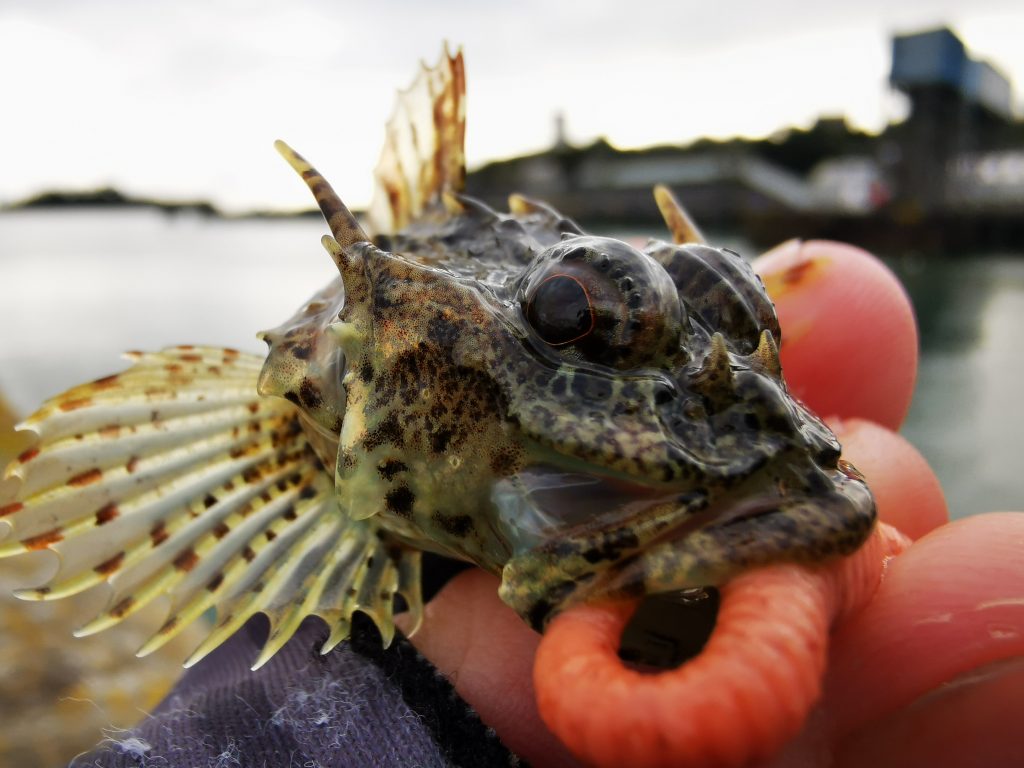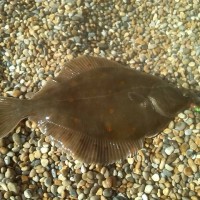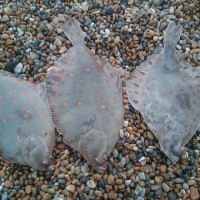LRF has been a part of the UK saltwater lure fishing scene for over a decade now. For most though, it’s still either a curiosity or a mystery – why are these LRF anglers so excited to spend their days catching tiny fish? I guess the quick answer to that is: it really isn’t just about catching small fish. For most who fish LRF style, it’s about variety and the challenge of how many species you can trick into taking an artificial bait. There are plenty of brilliant guides our there to this, from the early ‘Rockfish Files’ (find here) to more recent articles and blogs written by a myriad of top anglers. Personally, I have been fishing this way for 6 years, and I’m happy to answer of few of the common questions on this style of lure fishing.

A mini monster, the long spined sea scorpion.
What does LRF mean?
LRF stands for ‘Light Rock Fishing’, but that does not mean that all LRF has to be done from rocky marks. The LRF moniker came from trailblazers at the end of the 2000s who were translating the technique from it’s origins in Japan. We still take so much of our inspiration from the Far East, but UK LRF has taken on a life of it’s own too. We often affectionately call it ‘Lerfing’ here in the UK, or just ‘Lerf’, so if you see that term, that person is talking LRF.
What fish can I catch?
Theoretically anything from the tiniest gobies to double figure bass, depending on the location and how lucky you are. This form of lure fishing opens up a mad world of insane looking mini species, hard fighting rockfish and seasonal specialities.

It’s not all small fish! Check out this beautifully marked ballan wrasse.
What rod do I need?
LRF rods are rated to cast weights from under a gram to a maximum of 8 grams. They tend to come in two build types, either having a solid tip or tubular tip.
- Solid tips are far more sensitive and are perfect for picking up tiny bites from smaller species or subtle takes from bigger fish. The solid tip is not so great for keeping in close control with lures at distance or for imparting quick movements to metal jigs. For those situations you are better off with a tubular model.
- Tubular rods are also a little hardier, being less likely to be snapped by clumsy or careless anglers. The main drawback with tubular rods are they are a little less sensitive and give a bit more resistance to the fish when they bite.
I recommend solid tipped entry level rods from HTO & Majorcraft rated up to 7 grams as good starter options, all well under £100, some as low as £40.

A Majorcraft Solpara 0-5g bent into a big wrasse!
How do I choose a reel?
Reel size should be anything from 500 to 2500 to be suitable for LRF. The most important factor is a smooth retrieve. Overall you don’t have to spend loads of money on a reel.
You can find great options from Shimano, Daiwa and Mitchell for £20-50.
Can I just use any line?
Line is arguably the most important piece of the LRF tackle puzzle. Fine line is essential to get tiny lures and small weights to cast any distance. The thicker the line, the more resistance it creates as the lure flies through the air and as it sinks through the water column. There are really only two choices, Braid or Fluorocarbon.
- Braid is my first choice, I use no heavier than 6 or 8lb fine PE (Polyethylene) braid. I look for a PE rating of 0.3 or 0.4. The benefit of braid is that it doesn’t stretch so you are always in contact with your lure. The drawback is it can be difficult to use in windy conditions and tangles can be terminal if not careful! It also provides almost zero abrasion resistance on rocks, so a Fluorocarbon leader is required before you tie on a your rig. Despite those drawbacks, I rarely use anything else.
- Fluorocarbon can be also be used as a mainline, this is a good beginner’s choice as it’s very abrasion resistant and you don’t need to tie a leader. The lack of leader makes retying after snap offs less painful but the feel is not quite as direct as braid. Fluoro also sinks quickly which is a benefit when using lightweight rigs and lures. Some Fluoro can be quite prone to keeping it’s shape (known as high memory) so it’s best to use high quality, low breaking strain, fine Fluoro for your mainline.
My pick of braids would be Majorcraft Dangan Braid 0.3 PE 6lb breaking strain, you can find it for around £15 a spool, it’s a bargain. Fluorocarbon would be Berkley Trilene 4lb, it’s incredibly tough stuff, perfect for using as leader.
What rigs and hooks should I use?
One of the simplest ways to fish LRF is by using jigheads, simply tie one on, thread on your lure and get fishing. To start, I recommend using simple ball head jigs weighing around 1.5 to 2 grams, with no bigger than a size 8 hook. Once you get a feel for it, you can experiment with lighter or heavier jigheads, with bigger or smaller hooks.
Another great option is the ‘Split Shot Rig’, which is simply tying on a hook of a suitable size for your lure, anything from as small as size 22 to much bigger. You then pinch on a coarse fishing splitshot up the line and you are ready to go. You can adjust the weight and distance the shot is from the hook to suit your mark. A good start would be a size 10 or 12 coarse fishing hook and an SSG or AA shot.
The other option is the Dropshot Rig, a very popular freshwater lure fishing tactic. This has the benefit of keeping your lure suspended in one spot, it also gives you the option of fishing a heavier weight so it feels easier to keep in touch with your lure – perfect for a beginner. You can find my guide as to how to tie this rig here.

A selection of scented lures, jigheads and sinkers.
How do I choose the right lures?
This is where the fun really begins! There are so, so many LRF lures out there. It’s probably easier to break them down into three categories:
- Soft Plastics – These include 1 – 3 inch paddletails, ball tails, pin tails, fluke tails, curl tails… These can infused with scent or not, all have their uses. I recommend any small lures from Keitech, Majorcraft, Ecogear and Reins, but there is so much more. Enjoy going down that rabbit hole.
- Scented Lures/Fake Baits – Many soft plastics have scent but these take it to another level. These are referred to as ‘fake baits’ because they are as close to bait as you can get without digging up a real ragworm. These are hugely popular because they are so effective and easy to use. The best are the Marukyu Isome Worms, Berkley Gulp Worms and Ecogear Aqua Range. All of those lures are great options for the beginner and really help wean yourself off of bait.
- Metal Jigs – These are so much fun to use, you can find them in sizes from under a gram to well beyond LRF weights. These can range in price from £1.50 – £5. You can fish these on a straight retrieve, on the drop, bounced along the bottom and everything in between. My picks are the Majorcraft Jigpara range or any under 7g from HTO, all will catch a lot of fish.

A Majorcraft Dart jighead paired with a pink Keitech Shad Impact
Can I use bait?
We British have real obsession with using bait, be that a sliver of squid or mackerel, or the ever popular ragworm. Due to this it has become very popular to use real bait with LRF tackle and call it LRF. That is one of the only bugbears I have, LRF is lure fishing with artificial baits, be that soft plastic, hard plastic or metal, that is the skill. Of course you can use bait, it’s just not LRF when you do.
OK, I have the tackle and lures, where should I fish?
A lot of our Lerfing is done from man-made structure – harbours, piers, breakwaters etc. Of course you can fish from rock marks, beaches and anywhere else you can get to the sea or estuary. The simplest way to find fish is to target structure and cover first, where predatory fish often lurk. Fish very slow, don’t be afraid to keep the lure static at times, you will catch fish.

Traditional bait species will surprise you by greedily taking lures, like this pout.
Where can I find more information on LRF?
Firstly, this lighter side of saltwater lure fishing is one of the friendliest corners of our sport. Most Lerfers are humble, down to earth guys who are happy to share their experience. I guess targeting a lot of smaller species tends to attract those who are more modest than most. This leads to a more family feel on the social media pages and down at the harbours and piers that we bump into each other. It’s something I’m rather proud of.
Great Facebook groups are Plymouth LRF, LRF/Light Game Fishing and LURE FISHING SALTWATER HRF & LRF UK & IRELAND.
Check out Devon Lerfer and, of course, Fishing Tails on YouTube.
There is also (shameless plug!) my blog – https://benbassettfishing.home.blog/
And Adam Kirby’s blog – https://light.rockfishing.co.uk/
There are also a number of good videos on YouTube as well as our latest production which we hope you enjoy






